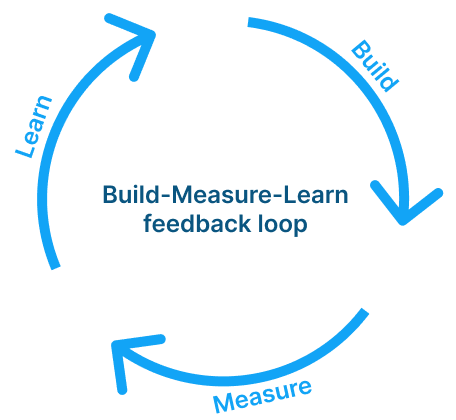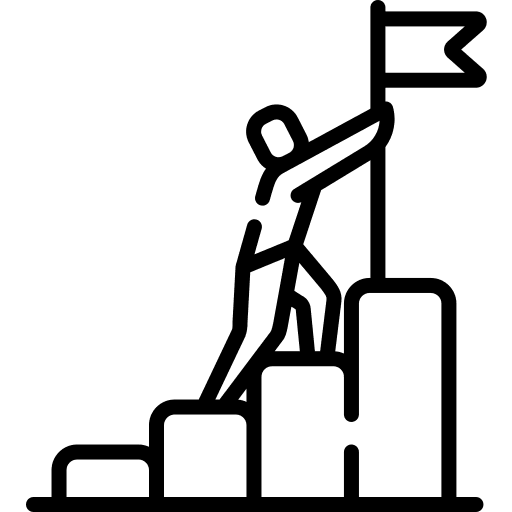Closed Loop Feedback: Tutorial & Best Practices
Gathering feedback from your customers is an integral part of the SaaS product development lifecycle, and there are many methods and processes for collecting and managing customer input in B2B products. For example, voice of the customer programs evaluate how your customers’ experiences match their expectations of your product. Customer analytics measures your customers’ behavior within the application. And customer relationship management (CRM) tracks all the communication touchpoints between your company and your customers.
Closed-loop feedback is unique among these methods because it involves not only the process of gathering and analyzing feedback but also responding to it. Closed-loop feedback means creating a continuous cycle to help your product team better understand customer needs and using that information to improve the experience.
Through closed-loop feedback, your team can gain a better understanding of your customers and make sure that your product is meeting expectations. And by demonstrating that your company is listening and responding to customer needs, you’ll improve customer loyalty by showing customers that your team listens to what they have to say.
When paired with product analytics, closed-loop feedback is also a valuable tool for uncovering product insights. Qualitative feedback provides insight into the thoughts and feelings of your customers, while product analytics can show you how those thoughts and feelings translate into customer behaviors. Validating how a customer’s interactions match up with their perception and feedback can provide much stronger insights. You can use this information to drive feature development and close the loop by following up with your customers to see how these features perform.
This article will outline the basic methodology for gathering and tracking customer feedback, offer solutions for some potential pitfalls, and highlight the role that closed-loop feedback plays in the “build-measure-learn” product development cycle.
Key closed-loop feedback concepts
| Customer feedback sources | Surveys, inbound email, usability tests, customer interviews, support requests, and social media |
| Challenges | Handling feedback at scale, prioritizing feature requests, and avoiding the “squeaky wheel” phenomenon |
| Solutions | Reaching users in-product for feedback, automated workflows, ticketing systems for bugs, social media strategy, feature prioritization, and cross-functional collaboration |
| Applying what you’ve learned | Build-measure-learn and iterate on feedback |
Sources of customer feedback
There are a variety of sources for customer feedback on your product. Email surveys are a traditional and straightforward method, along with a general feedback email inbox. However, you’ll likely achieve a significantly higher response rate by surfacing surveys in-app where the customer is already engaged with your product.
Another valuable source of feedback is user testing, which allows you to observe customers performing specific tasks and ask them direct questions about the experience. User testing sessions can include a mix of both task-based quantitative usability evaluation and qualitative interview questions.
Online forums and social media have become crucial sources of customer feedback, providing businesses with insight into the thoughts and feelings of customers. These platforms allow users to share their honest opinions and discuss their experiences.
There are also internal experts throughout your company who may have valuable feedback gathered from other channels. Customer success and account management teams interface directly with your customers and can share feedback from their accounts. You should also work with these teams to conduct exit interviews with churning customers.
Customer support representatives are another wealth of information. These are your internal subject experts when it comes to understanding the biggest pain points of your product. They can provide ample insight into what your customers struggle with and what their most frequent requests are.
Challenges
One of the biggest challenges you may face is collecting then addressing customer feedback at scale. Often, feedback collected is only from your “squeaky wheel” customers. Customers who submit feedback to email inboxes or speak up on social media may represent a disproportionately loud segment of unhappy users. It’s important to remember that a customer who is frustrated enough to seek out feedback channels on their own is someone who skews toward the far end of a bell curve and is probably not representative of your broader customer base.
It’s important to ensure you have ways of collecting representative feedback from your users, not just your loudest customers, and can effectively aggregate that feedback to gain meaningful insights.
The next challenge is taking action on that feedback and closing the loop with your customers. Once you are collecting a good breadth of comments and inputs, you’ll need to prioritize the feedback that is most impactful to your customers and business. Your team doesn’t have infinite development resources, so how do you prioritize which features to build or which bugs to address first? And how can you possibly respond to every piece of customer feedback to create that closed loop?
Solutions
Thankfully, tried and tested solutions are available to effectively collect and manage customer feedback and gain effective insights. You should plan to leverage a variety of strategies to track and respond to all customer feedback appropriately.
Launch Surveys and Collect Feedback In-App
One of the best ways to collect meaningful feedback is when your customers can reach out right at the point of service in your products. Using in-app feedback collection, you can offer a way for customers to submit tickets when issues arise and capture real sentiment right when a user is engaging with your feature/functionality. This helps provide more accurate information about workflows, help track user actions combined with their feedback to understand where the issue is, and provide more real-time feedback to your team.
Automate Feedback Collection
Workflows should be established to automate asking for feedback either in-app or via email. Things like an NPS score collected every 90 days helps you to keep a pulse on customer sentiment over time. It also provides an outbound touchpoint with customers, so they feel their voice is continually asked for and important.
Monitor social media
Social media plays a crucial role in gathering customer feedback. Customers are now more empowered than ever before to interact directly with companies: Platforms like Facebook, Twitter, and Instagram allow customers to share their thoughts and experiences in real time. To better manage this process, consider using social media listening tools to track and analyze customer conversations.
Leverage Community Forums
Another great listening post is digital communities. If you have a community forum or discussion board for your customers, hearing their pains and needs from the larger group helps to validate if a request is just a ‘squeaky wheel’ or part of a broader need among your users. Consider establishing betas or advisory groups from your community participants to get more detailed feedback. This is also a great way to close the loop by posting about new updates in community and asking for additional feedback from users.
Theme and Prioritize Feature Requests
Incoming product feature requests from all channels should be collected into a backlog for prioritization. Multiple requests for similar types of features or that focus on similar areas of your product can be grouped into broader themes. You can also create themes around distinct parts of the customer lifecycle or specific user segments. These themes provide an excellent starting point for assessing a proposed feature’s potential impact and for brainstorming new features. It’s also a good idea to include information about affected customers, like ARR, to accurately assess a new feature’s possible impact.
Tap into internal expertise
Leverage the knowledge of your internal customer experts by setting regular meetings with these teams. Your product, design, and customer research teams should work closely with customer service to understand themes they are hearing from customers. You may even want to consider regular “ride-alongs” with your CS team to listen firsthand to what customers are reporting. Also consider establishing a shared Slack or Teams channel for CSRs and the product team to share knowledge and discuss emerging themes.
Data completes the picture
Analytics data is also an invaluable tool in handling customer feedback at scale. Pairing real-time quantitative data with the qualitative feedback your customers are sharing will give you a well-rounded picture of both customer sentiment and customer behavior.
Applying it all: build-measure-learn
Now that we’ve examined the closed-loop feedback process, we can translate that concept into action within the product development lifecycle. The build-measure-learn concept is a framework that emphasizes rapid experimentation and learning. This framework centers on the idea that the best way to build a successful product is to start small, with a minimum viable product (MVP), and continuously iterate on that initial offering based on learnings from your customers. As the name implies, there are three stages to the process that are cyclical and looping, building off of your team’s closed-loop feedback process.

Build
Create an MVP, which is a streamlined version of your product that can be used to test key assumptions about the product with real customers. The MVP should have just enough features to be useful but not so many that it becomes difficult to build or test.
Measure
Gather feedback from customers and other stakeholders and use that feedback to improve the product. Pair the customer feedback sources mentioned above, including surveys, emails, usability tests, customer interviews, and social media, with customer analytics to develop a picture of how your customers are responding to this minimal initial product.
Learn
Use the feedback gathered in the previous stage to inform the next iteration of the product. Your learnings might lead to making changes to the MVP or developing new features based on customer feedback. The goal is to learn as much as possible about what customers want and use that learning to improve the product.
Customer feedback is the key
Creating processes for your closed-loop feedback cycle supports a build-measure-learn methodology. Not only will you be cultivating loyal customers by responding and engaging with their feedback, but you’ll be using that feedback to validate assumptions and optimize your product development process. This helps avoid wasting time and resources on features that customers do not need or want.
Closing the loop on customer feedback means responding to and acting on the information you receive from a wide variety of sources. This process allows you to improve your product iteratively and keep your customer at the center of your product development process.


